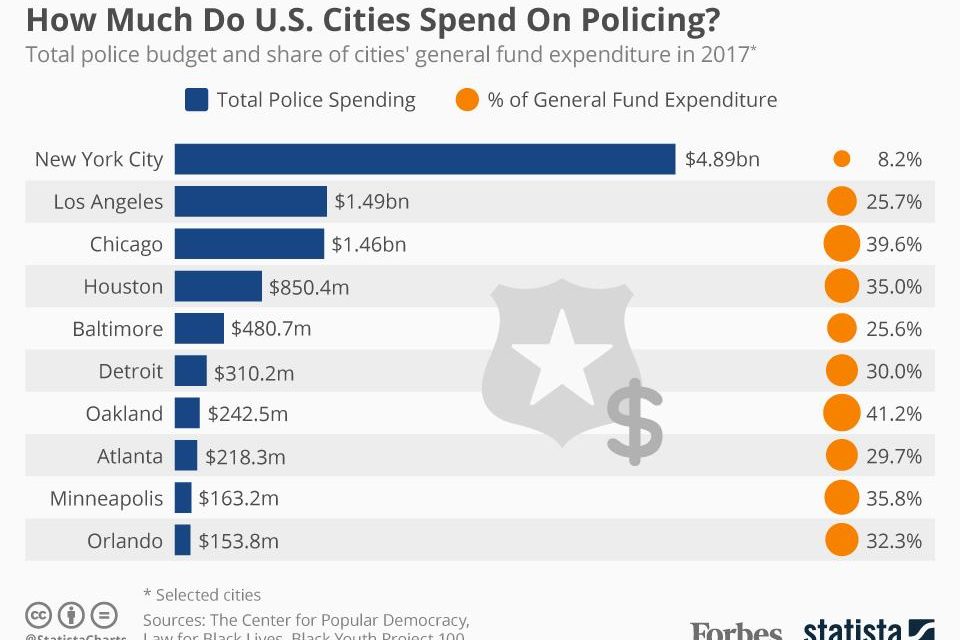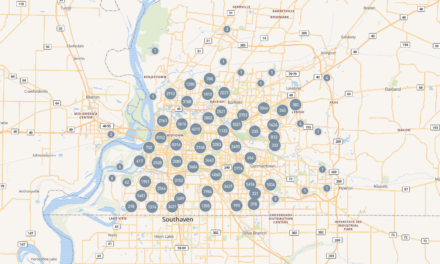Thumbnail: Despite declining crime rates, cities across the U.S. have given more and more of their budgets to policing. In Memphis, 40% of the entire city budget is spent on MPD and its budgets have increased at a pace greater than the city budget overall.
Over the past three decades, U.S. cities have allocated larger and larger shares of their budgets towards law enforcement. Today, the U.S. collectively spends more than $100 billion a year on policing and a further $80+ billion on the incarceration of 2.3 million people.
Now, in the wake of George Floyd’s murder, cities are considering cuts to police budgets so funds can be shifted to programs that emphasize intervention and prevention over suppression and arrests.
In Memphis, the police department’s budget has increased 11.2% since 2017, compared to 7% for the entire city budget.
In 2017, MPD’s budget amounted to 38% of the City of Memphis budget. Today, it is 40%.
Although crime levels have dropped substantially over the last 30 years in line with the spending uptake, a report by The Center for Popular Democracy, Law for Black Lives and the Black Youth Project 100, makes the case that investment in mental health, housing, youth development and living wages would stabilize communities and prove more effective than policing.
The report also provides an overview of police budgets across several major American cities. Oakland allocated the highest share of its general fund to policing in 2017 at 41 percent and $242.5 million. Chicago was close behind with 39.6 percent ($1.46 billion) while Minneapolis set aside 35.8 percent ($163.2 billion). New York had the highest police budget in FY 2017 at $4.89 billion, though this only equates to 8.2 percent of the city’s general fund.
In its report, the Center for Popular Democracy wrote:
The choice to resource punitive systems instead of stabilizing and nourishing ones does not make communities safer. Instead, study after study shows that a living wage, access to holistic health services and treatment, educational opportunity, and stable housing are far more successful in reducing crime than police or prisons.
While many community members assert that increased spending on police do not make them safer, cities and counties continue to rely overwhelmingly on policing and incarceration spending while under-resourcing less damaging, more fair, and more effective safety initiatives.




